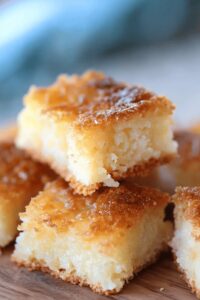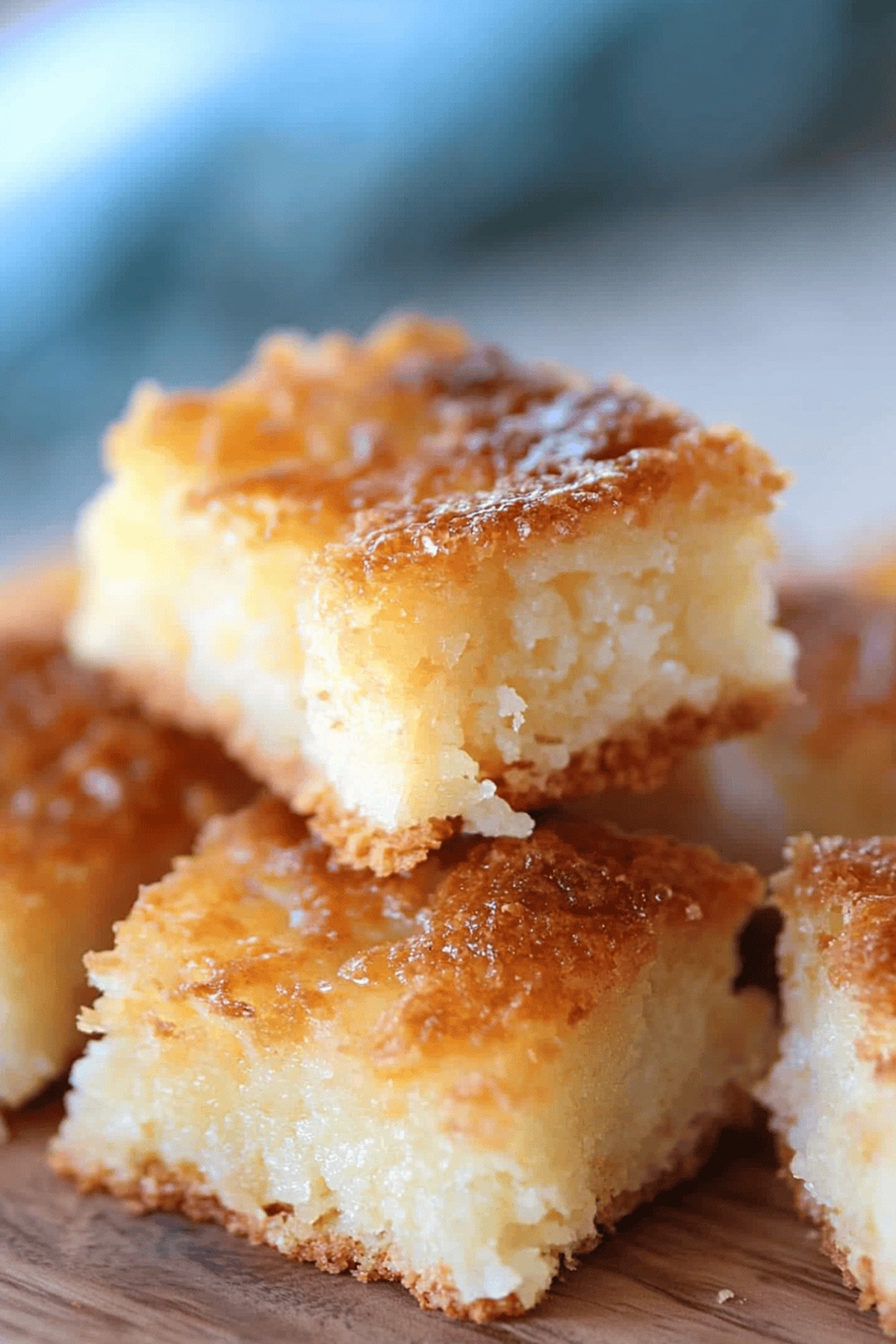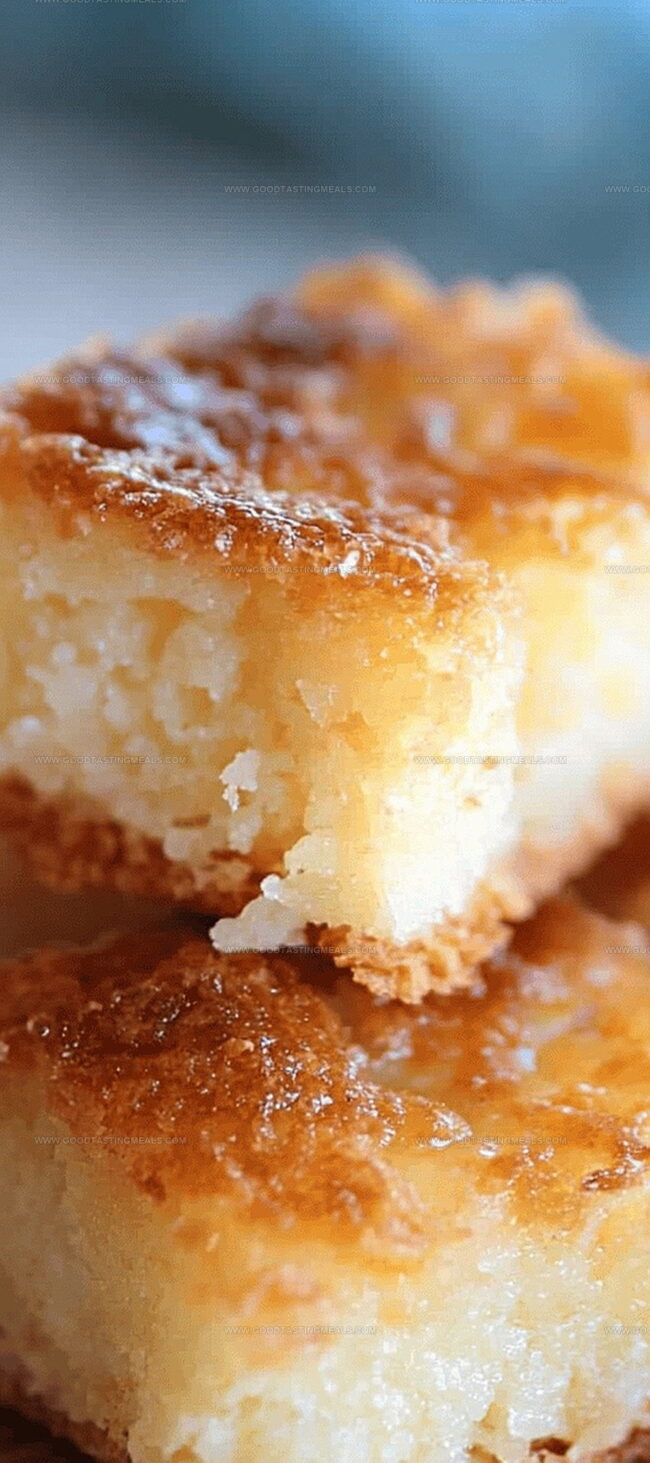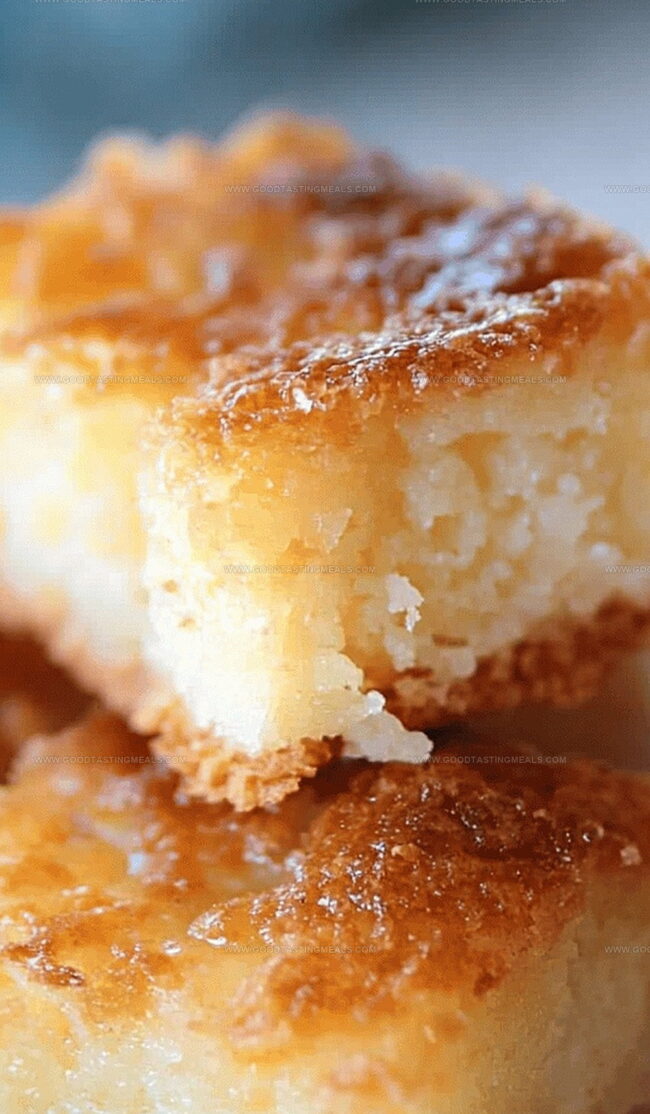Sweet Bibingka: Homemade Filipino Coconut Cake Recipe
Sweet, pillowy clouds of flavor float from the oven when you bake this authentic bibingka, a traditional Filipino coconut cake steeped in cultural richness.
Generations of home cooks have perfected this delectable treat passed down through cherished recipes.
coconut milk and rice flour create a tender, slightly dense texture that melts on your tongue.
Banana leaves infuse a subtle earthy aroma into each delightful bite.
Warm and comforting, this dessert connects you to the vibrant culinary traditions of the Philippines.
The soft, golden surface hints at the deliciousness waiting inside.
Let’s dive into a recipe that promises to transport your senses to tropical paradise.
Quick Recipe Overview
Bibingka – Filipino Coconut Cake Ingredient
For Creamy Base:For Flour and Leavening:For Moisture and Flavor:Traditional Tools You’ll Need for Bibingka
Baking Bibingka Step-by-Step at Home
Prepare your cooking space with all necessary tools. Ensure the oven is clean and ready for baking. Gather mixing bowls, measuring tools, and baking pan.
Blend cream cheese and sugar until silky smooth. Work the mixture until it becomes light and fluffy, creating a rich base for the cake.
Gently incorporate eggs into the creamy mixture. Add each egg slowly, stirring carefully to maintain the smooth texture.
Combine rice flour, baking powder, melted butter, vanilla, coconut cream, milk, and pineapple. Stir until the batter becomes uniform and silky. The mixture should look glossy and well-blended.
Transfer the batter into a greased baking pan. Sprinkle brown sugar and additional sugar across the top, creating a sweet crystalline layer.
Place the pan in a preheated oven. Bake until the cake turns golden and sets completely. The aroma will fill your kitchen with tropical sweetness.
Allow the cake to cool completely. Cut into square portions and serve. Enjoy the delightful Filipino-inspired dessert with friends and family.
Coconut Cake Tips to Stay True to Filipino Flavor
How to Serve Bibingka Warm and Fluffy
Storing Bibingka So It Doesn’t Dry Out
Print
Tropical Bibingka Filipino Coconut Cake Recipe
- Total Time: 1 hour 15 minutes
- Yield: 13 1x
Description
Luscious bibingka celebrates Filipino culinary heritage with its delicate rice flour base and coconut milk richness. Warm banana leaf wrapping and salted egg toppings invite home cooks to explore traditional island dessert crafting.
Ingredients
- 15 oz (425 g) can cream of coconut
- 3 ½ cups (875 ml) sweet rice flour
- 2 cups (400 g) granulated sugar
- 8 oz (226 g) cream cheese
- 1 cup (240 ml) milk
- 3 eggs
- 8 oz (226 g) can crushed pineapple
- ½ cup (113 g) butter, melted
- 1 tbsp baking powder
- 1 tbsp vanilla
- ¼ cup (50 g) brown sugar
- 2 tbsps granulated sugar
Instructions
- Preparation: Preheat oven to 350°F and grease the baking pan thoroughly to prevent sticking.
- Mixing Base: Cream together cream cheese and sugar until smooth, then methodically blend in eggs one at a time to create a uniform mixture.
- Ingredient Integration: Fold in sweet rice flour, baking powder, melted butter, vanilla extract, coconut cream, milk, and chopped tropical fruit, whisking until the batter becomes silky and well-incorporated without any dry clusters.
- Baking Technique: Pour the batter evenly into the prepared pan, sprinkle with brown sugar and additional granulated sugar to create a caramelized topping.
- Oven Transformation: Bake for approximately 55-60 minutes, monitoring until the bibingka develops a golden-brown crust and a firm center when tested with a knife.
- Cooling and Serving: Remove from oven and allow the cake to cool completely, enabling the internal structure to set before slicing into elegant portions, presenting this traditional Filipino delicacy with its rich, tropical essence.
Notes
- Ingredient Temperature Matters: Ensure all ingredients, especially cream cheese and eggs, are at room temperature for smooth blending and consistent texture.
- Rice Flour Selection: Use sweet rice flour (glutinous rice flour) specifically, as regular rice flour won’t provide the same authentic, soft bibingka texture.
- Moisture Control: Don’t overmix the batter to prevent a dense, tough cake; mix just until ingredients are combined for a tender crumb.
- Topping Technique: Sprinkle sugar on top during the last 15 minutes of baking to prevent burning while creating a caramelized, crispy surface.
- Prep Time: 15 minutes
- Cook Time: 1 hour
- Category: Desserts, Snacks
- Method: Baking
- Cuisine: Filipino
Nutrition
- Serving Size: 13
- Calories: 300
- Sugar: 29 g
- Sodium: 200 mg
- Fat: 12 g
- Saturated Fat: 7 g
- Unsaturated Fat: 4 g
- Trans Fat: 0 g
- Carbohydrates: 42 g
- Fiber: 1 g
- Protein: 3 g
- Cholesterol: 70 mg




Sophie Martin
Co-Founder & Content Creator
Expertise
Education
Stellenbosch University, South Africa
South African Chefs Academy, Cape Town
Sophie Martin is the nutrition brain and feel-good foodie at Good Tasting Meals. With a degree in Human Nutrition from Stellenbosch University and chef training from the South African Chefs Academy, Sophie brings balance to the table, literally. She loves creating meals that are easy to make, great to eat, and good for your body too.
Her recipes are made for everyday living, with a little flair and a lot of heart. Sophie’s not here to count calories, she’s here to show you how fresh, simple food can fit into your life, taste amazing, and still be nourishing.